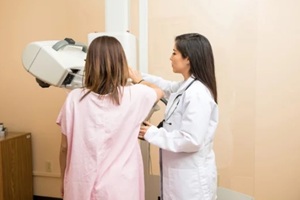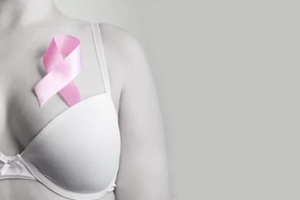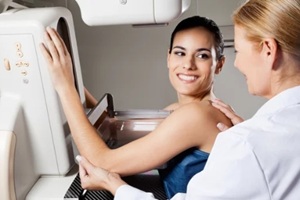 Many women experience a wave of anxiety and uncertainty when it’s time for their routine breast cancer screening. This is because for many of them, mammograms are associated with discomfort, exposure to radiation, and the worry of false positives. In search of less invasive options, some women are turning to thermography, or thermograms, as a possible alternative.
Many women experience a wave of anxiety and uncertainty when it’s time for their routine breast cancer screening. This is because for many of them, mammograms are associated with discomfort, exposure to radiation, and the worry of false positives. In search of less invasive options, some women are turning to thermography, or thermograms, as a possible alternative.
This infrared imaging technique promises a radiation-free, pain-free experience, which can sound appealing. But is it truly reliable? Find out the differences between thermography and mammography, review current medical evidence, and learn whether thermograms are a safe alternative to traditional breast cancer screenings.
What Is a Thermogram?
Thermography, also known as a thermogram, is a non-invasive imaging technique that uses an infrared camera to look at blood flow and heat patterns in the body. It does not involve any radiation or breast compression, which makes it an appealing option for women who want to avoid the discomfort of typical mammograms.
The idea behind thermography is that abnormal tissue, including cancer, may produce extra heat due to metabolic activity and increased blood flow. Some advocates promote it as a tool for early breast cancer detection. However, accepting what thermography can and cannot reliably detect is essential.
What Is a Mammogram?
A mammogram is a low-dose X-ray of the breast designed to detect abnormalities, such as calcifications, masses, or tissue distortions that may indicate breast cancer. It has been a cornerstone of breast cancer screening for decades and is strongly endorsed by major medical organizations including the American Cancer Society and the U.S. Preventive Services Task Force.
While mammograms are widely regarded as effective, they do have limitations. Some women find the procedure uncomfortable or stressful, and it does involve a small amount of radiation.
In addition, mammograms can sometimes result in false positives or the need for follow-up imaging. Despite these drawbacks, mammograms remain the most reliable and proven method for early detection of breast cancer.
Thermograms vs. Mammograms: Evidence-Based Comparison
When it comes to breast cancer detection, mammograms remain the gold standard. The CDC maintains that for many women, mammograms are most accurate for identifying early-stage breast cancer.
They are particularly effective at identifying microcalcifications, which are small deposits of calcium that are sometimes an early sign of cancer, which thermograms cannot visualize. In contrast, peer-reviewed research has found that thermography has much lower sensitivity (ability to detect disease) and specificity (ability to rule out disease), making it far less reliable as a primary screening tool.
 The U.S. Food and Drug Administration (FDA) has issued multiple warnings stating that thermography should not be used as a substitute for mammograms. No major medical organization, including the American Cancer Society, the American College of Radiology, nor the U.S. Preventive Services Task Force, endorses thermograms as a standalone method for breast cancer screening or diagnosis.
The U.S. Food and Drug Administration (FDA) has issued multiple warnings stating that thermography should not be used as a substitute for mammograms. No major medical organization, including the American Cancer Society, the American College of Radiology, nor the U.S. Preventive Services Task Force, endorses thermograms as a standalone method for breast cancer screening or diagnosis.
Some integrative or alternative health practitioners may offer thermography as a supplementary tool to monitor breast health. While it may provide additional context in certain situations, it should NOT be relied upon in place of a mammogram. For women concerned about radiation or discomfort, a thorough discussion with a trusted healthcare provider is important.
Why Some Women Prefer Thermograms
Many women are drawn to thermography because it offers a screening experience without radiation, compression, or discomfort, factors that can make mammograms feel intimidating or even traumatic. For those with a history of pain, anxiety, or a preference for holistic or “natural” approaches, thermograms may seem like a gentler alternative.
Personal values, past medical experiences, and even trauma can shape how a woman approaches her health decisions. These concerns are deeply valid. Every woman deserves access to compassionate, respectful care and clear, evidence-based information to help her make the choice that feels safest and most empowering for her.
Risks of Relying Solely on Thermograms
Relying only on thermography for breast cancer screening can lead to a false sense of security. Thermograms are unable to detect many types of tumors or identify internal changes like calcifications, which are often early signs of cancer. As a result, cancers may go undetected until they progress, reducing treatment options and potentially worsening outcomes.
Compassionate, Informed Screening Options
A patient-centric approach to women’s health recognizes that each individual has certain concerns, values, and experiences that shape their medical decisions.
 Leading clinics aim to provide personalized care that respects these differences, offering space for open conversations about screening options.
Leading clinics aim to provide personalized care that respects these differences, offering space for open conversations about screening options.
For women who feel hesitant about mammography, whether due to discomfort, safety, or personal beliefs, healthcare providers offer supportive strategies to ease the process and address specific concerns.
Trust Raleigh with Your Breast Health
While thermograms may seem like a gentle alternative, current medical evidence makes it clear they are not a reliable substitute for mammograms. Early detection saves lives, and mammography remains the most effective diagnostic tool available today.
If you have concerns, questions, or simply want to learn about your options, we’re here to help. Contact Raleigh Gynecology & Wellness today to schedule your screening or speak to one of our providers about what screening strategy is right for you.
